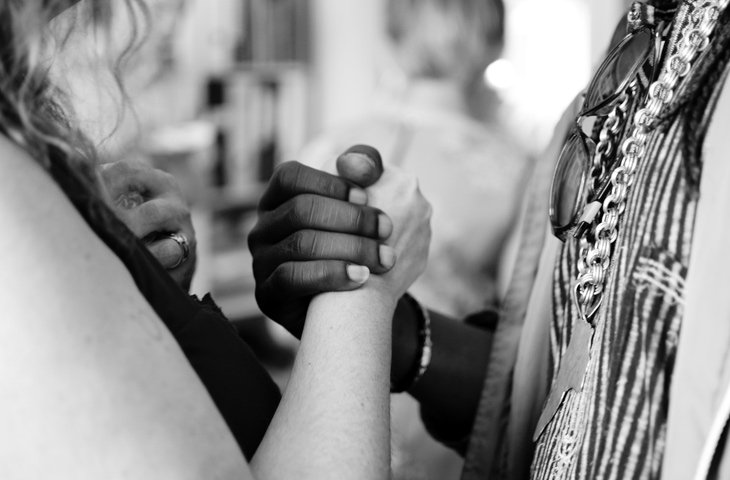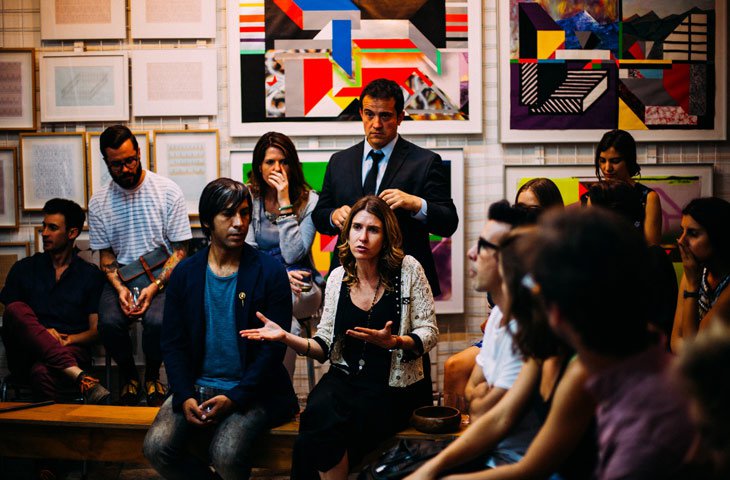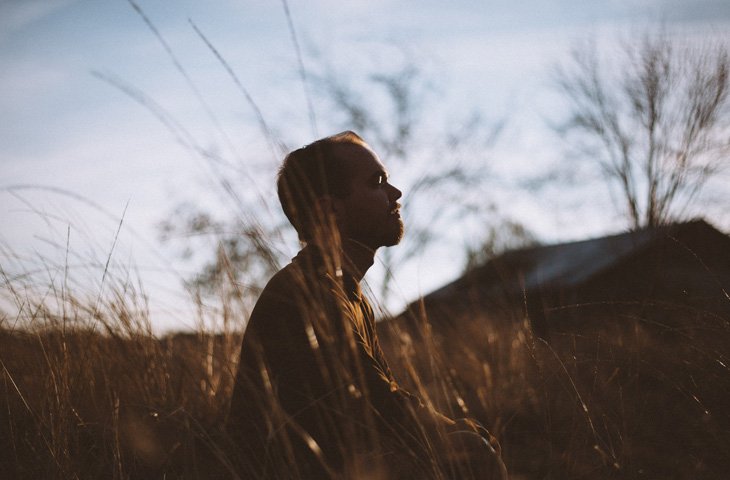Promoting Diversity and Inclusion In Your Retreat Offerings – With Melissa Sutor
“Because of all that’s happening in our current climate, there’s heightened awareness and attention on racial injustice.
A lot of people are focusing solely on diversity and inclusion in this sense -- race, ethnicity, culture – but for me, it’s broader.
It’s gender, sexuality, age, religious beliefs, political beliefs. How do we have an openness and an acceptance of all of these wonderful things that make us different? And at the same time, how do we see that we're all connected in our humanity? We're all human beings.”
These are insights from Melissa Sutor, Founder and Director of Happiness at Dragonfly Healing Center. We caught up with Melissa to talk about what we uphold to be really fundamental values for us and our community.
For retreat leaders, promoting diversity and inclusion in your offerings means opening yourself up to being connected with others. It means not being afraid of saying and doing, rather accepting that it’s the process we go through to become better people.
Taken from our conversation, here are seven learnings you can consider when thinking about how to practice diversity & inclusion in your retreat offerings.
7 Learnings To Guide You In Promoting Diversity and Inclusion (D&I) In Your Retreat Offerings
1. Inclusion Creates Connection In Our Diverse World
Jen: “Diversity” and “inclusion” are terms that are getting thrown around a lot these days. What do they mean to you?
Melissa: There’s this great analogy that I think kind of sums it up. “Diversity” is like being invited to the party, and “inclusion” is being asked to dance.
Diversity is so abundant in all aspects of the world; there’s diversity in people, diversity in nature. But the inclusion piece is where I think there can be a more of a disconnect.
Inclusion is a sense of being welcome, feeling engaged, and knowing that you belong everywhere; really, that this world is a home for all of us.
2. Internalize Your Intentions, Let Them Show In What You Put Out Into The World and To Your Clients
Jen: It's wonderful that our awareness around racial injustice is more attuned in this moment. We're being called to take an active role in facilitating and promoting diversity and inclusion.
However, I think that there are people who feel paralyzed by the fear of saying the wrong thing or being perceived as “jumping on the bandwagon.”
How do we approach this question thoughtfully, rather than give it superficial treatment?
Melissa: We really want to make sure that the first step is doing our own work. That's the piece that separates those who are authentic in their efforts rather than just performative.
As a retreat leader, you're stepping into a role that comes with a great deal of responsibility. You want to be aligned with what you're teaching. In many traditions, including yoga and mindfulness, there's a huge sense of interconnectedness, that we are all one.
If you have an awareness of that, then this diversity and inclusion work has likely already come into your consciousness.
If it hasn't, then really reflect on that and think, "Why is that? Where's that disconnect?" Doing this work is really about raising your own consciousness, being in true alignment with what it is that you've been called to offer the world.

3. There Is No Perfection, Only Perseverance and Willingness To Learn From Your Journey
Melissa: I did want to touch on one other thing you brought up: fear of saying the wrong thing or doing the wrong thing.
The key there is having the humility to admit, "There is no perfection, maybe there are going to be some things that we're going to get wrong."
It's about being grounded enough in your own practices to have an energy and authenticity of being a welcoming presence. People are going to feel that, and they're going to want to support you in that work. Don't be afraid to get something wrong, and don't be afraid to ask questions.
An example from my own offerings is that I've been working on actively welcoming people of different physical abilities. If there's someone I'm working with who has physical limitations, I'm making sure I've done what I need to do coordinating with my retreat venues; for example, that our spaces are ADA compliant.
Of course, there have been things that I didn't know, or I hadn't fully researched. Just being able to be humble, and to say, "I genuinely want to make this a wonderful experience for everyone. How do I best serve you?"
4. Expand Your Horizons, Build Bridges To A Genuinely Inclusive Space

Jen: That’s great, thank you! To take things one step further, let’s say you don’t have as diverse of an audience as you’d like at the moment. How can someone work to actively change that, especially in the messages they’re sending through their marketing efforts?
Melissa: Yes! But first, let’s take a little step back from that.
Even before getting to the marketing and the communication piece, we have to go back to our own work; to knowing ourselves, to expanding our comfort zones. If you notice you're now looking around at your circles, and you're going, “Oh, there's not a whole lot of diversity here,” then take some action to change that.
Be intentional about being involved in groups and communities that are already diverse. Make connections, establish relationships, build some bridges. Then, it’s going to come from a more genuine place when you’re doing your marketing and communication because you’re going to learn so much through those experiences.
You're going to learn about language. For instance, this is a big one for a lot of us when it comes to gender identification. We'll say things like "Hey guys!" and for some, that can be really triggering.
It's just being aware of how you can be welcoming and inviting in using language that is inclusive.
All of a sudden, "Hey everyone!" or "Hey y’all!” is going to feel more natural. Your words need to reflect the fact that we’re working to create a safe space for everyone, we celebrate our diversity, and we welcome all people and all ideas.
5. In Marketing Materials, Reflect The People You Want To Share Your Offering With

Melissa: To tie these concepts back to marketing, another big consideration is the images you use. This is starting to change, but a lot of times retreat leaders' websites are filled with photos of White women of similar ages and body types.
It happens so much that you may not even notice this consciously, but for people that don't fit that mold, you may be sending the wrong message. They may see your website and say, "Gee, this looks great, but I guess it's isn't for me."
Use real photos that celebrate the diversity of your community. It's not just your words; it's showing people, "You belong here."
Wonder What's Missing From Your Wellness Business' Marketing Strategy?
6. Strive To Listen, It Inspires Transformation
Jen: Thank you, there’s so much inspiration here for me personally and for our community as a whole.
Before we wrap up, I’m going to ask a pretty open-ended question: What do you see as the main rewards and challenges that we, as retreat leaders, will face in tackling the issues of diversity & inclusion?
Melissa: Great; I'm going to take a kind of a metaphysical direction here, grounded in spirituality. The challenge is to transform ourselves; to bring greater awareness to what we're doing; to be aware of our own suffering. Sometimes we don't realize that we suffer when we are not connected.
When we aren’t actively promoting diversity and inclusion, we’re actually suffering. And we are meant to help to alleviate our own suffering and to help others alleviate theirs.
It can be hard to look at ourselves, to face all of these things, and to say, “Okay, this is something that I would like to transform,” and to actually do that work of looking at our blind spots, which we all have, and how they may do harm to others.
So, if someone approaches us that’s on the receiving end of this harm, we need to be open to hearing and listening, instead of getting defensive and shutting down.
7. Examine Your Own Possible Biases To Bring Greater Awareness To Your Decisions

Melissa: Let’s think about a group that has been marginalized, for example, the Black community. Even if you don’t consciously think, “Blacks aren’t as smart or competent as Whites,” really ask yourself, “Is there a possibility that there’s still some unconscious bias going on?
Have I ever assumed that someone isn’t as informed about or interested in a certain topic just because they’re a member of a certain group?
Have I ever failed to connect with someone from that group because of assumptions I may be making?”
To really honestly see that in yourself, without judgment, without beating yourself up about it – that's part of our mindfulness practice. It's bringing awareness to our experience in a non-judgmental way and having compassion towards ourselves.
It's easy enough to say, although the practice itself can be very difficult. We need to shine a light on our blind spots, forgive ourselves for them, and then act to do things differently in the future.
The benefit of that is the raising of our own awareness and activating our own evolution. That's huge, that's the reason we're here!
That practice involves us all; it happens for us all together. If you say, "May all beings be free," and really mean it, the implication is that "I am not free until all beings are free." And it's challenging, but it's so rewarding.
Final Thoughts
Our gratitude to Melissa for sharing these insights with us. As a community, it gives us a valuable awareness of how we can all take steps to create space where we are more connected, aware, and transformative as human beings sharing this journey of life.
To catch future Q&As live, join our Retreat Leader Hub Facebook group, where we’ll notify you about the upcoming sessions.
New resources, straight to your inbox
We’re committed to your privacy. WeTravel uses the information you provide to us to contact you about our relevant content, products, and services. You may unsubscribe at any time.




